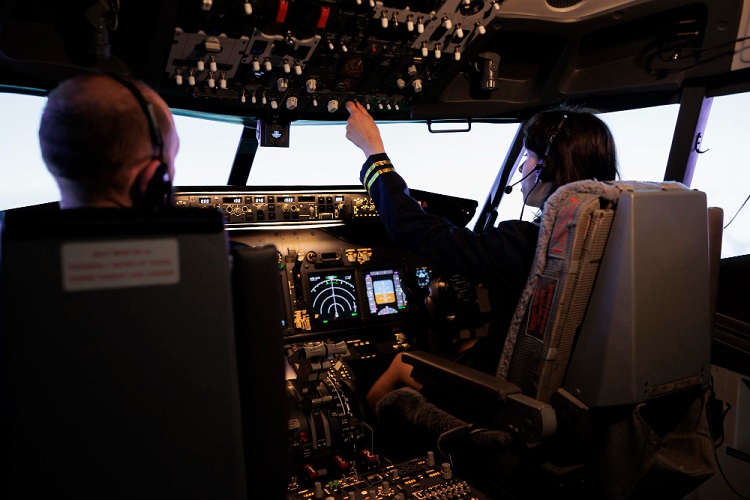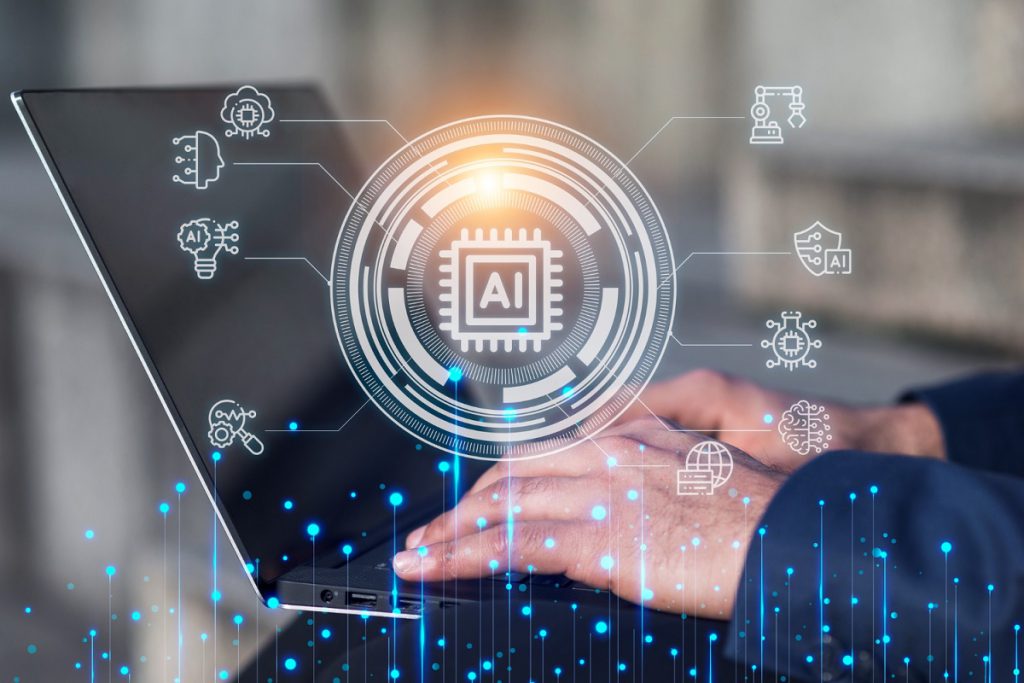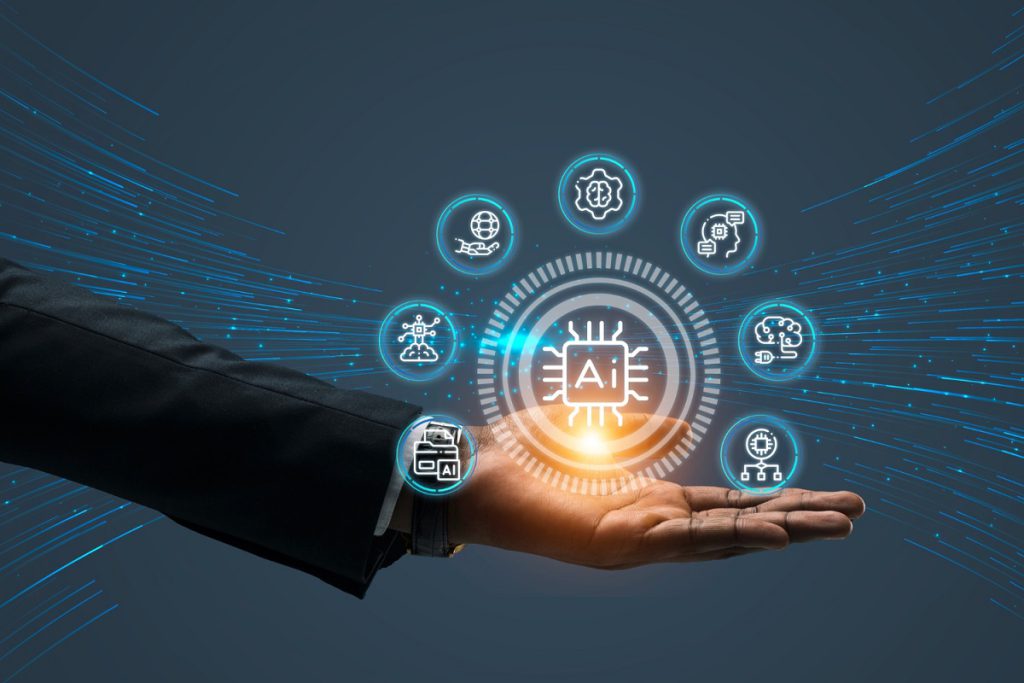Aerospace exploration is incomplete without the use of artificial intelligence. Aerospace engineering is an engineering discipline where engineers plan, design, and craft aerospace vehicles with improved aerodynamics to maximize fuel efficiency.
AI aerospace engineers help aerospace engineers create AI-enabled systems in aerospace vehicles to enhance the vehicle’s capabilities, improve its speed, performance, and accuracy in predicting the outside environment, and make informed decisions to avoid any aerospace accidents.
In this blog, we will explore several pros and cons of using AI in the aerospace industry.
Pros of Using AI in Aerospace
Look into the pros of using AI in aerospace, such as how it could improve safety and efficiency and how it could cause ethical and technical problems.

Read: How AI Consulting Company helps to grow your business
#1. Automating Flight Management Systems
Flight of the aerospace vehicles requires management of the air routes with proper time scheduling. If the air routes are busy, we need to optimize the flight route allocation system with the help of artificial intelligence.
Through an advanced, robust, and scalable AI-enabled aerospace flight automation system, we can assign safe routes to aerospace vehicles and schedule their departure and arrival efficiently.
#2. Enhancing User Experience for Pilots in the Cockpit
The pilot and copilot sit in the cockpits of the aerospace vehicles. There are lots of controls that need pilot action at the right time to ensure the proper flight of aerospace vehicles.
Since human promptness and reflexes have limitations, but AI knows no boundaries, they can help pilots and copilots during critical circumstances and take proper actions at the time of need.
In this way, they enhance the user experience, guide the pilot and copilot for specific tasks, and take action if there is a delay in the response or action before it is too late to avoid flight accidents.
Read: The Role of AI Consulting Services in Digital Transformation
#3. Assisting Pilots in Making Informed Decisions
Aerospace AI solutions help us capture the dynamics of the environment, inspect the ground level and height above sea level, and record real-time temperature, air turbulence, and wind speed information that is useful in determining the suitable condition for the flight of an aerospace vehicle.
If the AI-enabled system of aerospace vehicles finds a sudden rise in temperature or wind speed or predicts any dangers that can cause damage to the aircraft, it asks pilots or co-pilots to change the flight route and return to nearby safe areas.
#4. Enabling Autopilot Modes for Pilot Rest
When the environment is suitable for flight and there is no risk for aerospace vehicles, we can put them in autopilot mode to enable pilots to rest for some time.
This helps them to vitalize their energy, refresh their minds, and take rest if they are feeling sick due to long flight in aerospace vehicle. Sitting postures often cause fatigue in the muscles or pain in the back.
Read: Understanding Challenges of Artificial Intelligence Consulting
#5. Facilitating AI-Enabled Vehicles for Space Exploration
Designing aerospace vehicles requires proficiency in aerodynamics and the selection of the appropriate materials for fuel efficiency. This task requires complex mathematical calculation and computation with precision engineering to ensure proper aerospace design.
We also need to train the ai model with efficient training data to make the aerospace vehicle robust and sophisticated with deep learning and machine learning algorithms. By building AI-enabled aerospace vehicles, we can explore undiscovered realms of spaces.
#6. Predictive AI Maintenance of Aerospace Vehicles
The maintenance of the aerospace vehicle can be expensive if there is delay. The software bug and performance-related issues can cause accident that lead to huge financial loss.
To avoid this, we can make use of ai predictive mechanisms that allow us to analyze the various components of the aerospace vehicle that need maintenance or replacement.
Read: Top 7 Development Tools Used by AI Developers in India
Cons of Using AI in Aerospace
Find out the cons of using AI in the aerospace industry, such as how it could make operations more efficient and how it could cause system failures or cyber threats.

#1. Reliability Concerns for Human Safety
One of the most significant drawbacks of using artificial intelligence in aerospace industry is the reliability of ai system. Although ai can perform complex tasks better than humans, we cannot rely on them for critical flight operational tasks.
They can operate as per the machine algorithms; however, if the training data is not efficient, they might work in unpredictable way and become inefficient in handling emergency situations. This might pose severe risks to human safety.
#2. Inaccurate Real-Time Weather Predictions
Customized AI solutions for the aerospace industry help us analyze real-time weather conditions. To ensure that aerospace vehicles have a soft landing on the ground, we need to inspect the ground-level conditions properly.
Poor decision-making can cause damage to the vehicle due to hazardous situations. An AI-enabled software system can record the temperature, humidity level, dust presence, wind speed, and light conditions for a safe flight.
Read: A Comprehensive Guide to Understand AI as a Service platform
#3. High Investment Requirements
Implementing ai in aerospace sectors requires huge financial investments. If the AI strategy is not built properly after analyzing all types of associated risks, then it might cause accidents involving expensive aerospace vehicles that might cause utter loss to investors.
With the help of AI consulting, we can ensure that we build cost-effective and powerful AI strategies for the aerospace industry to avoid unnecessary financial burdens.
#4. Potential for Financial Losses Due to AI-Enabled Crashes
AI-enabled systems are designed to enhance the safety of aerospace vehicles and ensure maintenance work is done from time to time.
The malfunction of an essential unit of an aerospace vehicle can pose a risk to human safety and cause flight accidents that can cause huge financial losses for the aerospace vehicle owner.
If the AI-enabled system is not properly trained for adapting to a real-time environment, it fails to make decisions properly at the time of need, which causes aerospace vehicle collisions with meteors and comets.
Read: Things to know about before selecting any AI as service provider
Conclusion
To sum up, we must say that there are numerous benefits to integrating AI into aerospace vehicles. First of all, we can automate the flight management system in an optimized way that causes fewer accidents due to aerospace vehicle collisions with each other.
AI-enabled systems must be trained on sufficient training data to enable them to take informed decisions at the time of need.
As the technology evolves, we need to keep the AI-enabled systems updated and protect them from any vulnerable attacks and hacking incidents.
Read More:
- Futuristic use of artificial intelligence in various sectors
- How to Maximize ROI with Customized AI products
- How to Innovate business processes with AI products?
Follow us on Facebook, Twitter, and LinkedIn for more information about artificial intelligence.




